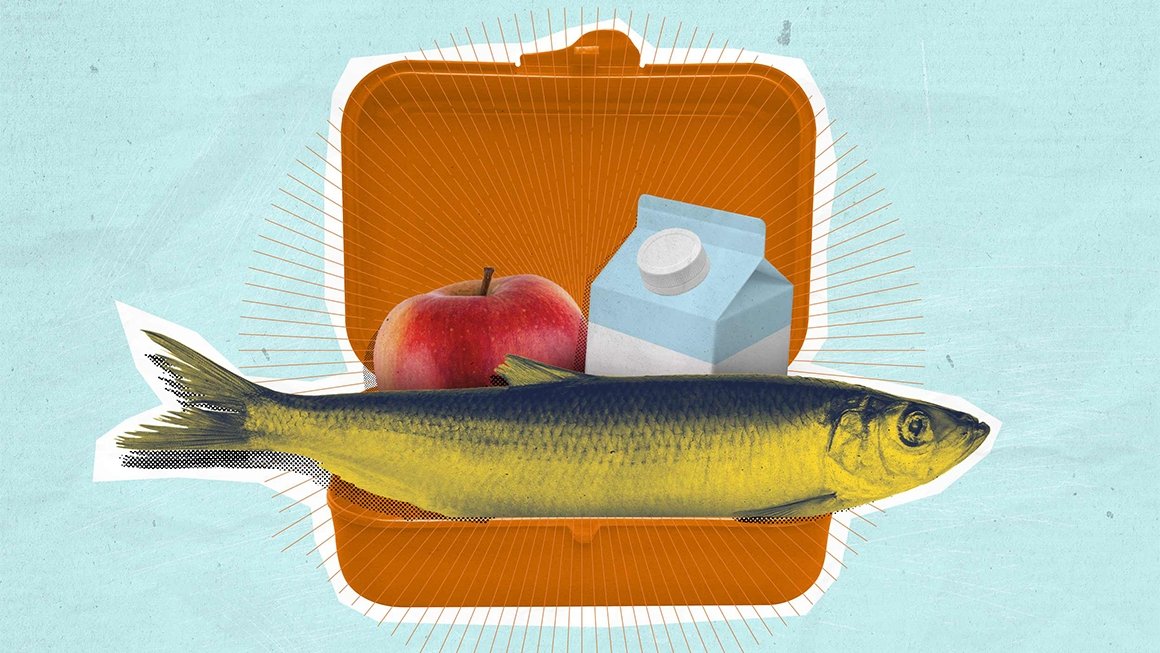
Q&A: Why Something Fishy Is Good for a Child’s Diet
UVA dietitian Sibylle Kranz shares with parents the latest research on seafood consumption and child growth.
Getting kids to eat a balanced diet is often a challenge, and it can be especially tough when it comes to fish and other seafood. Add in concerns about contaminants in seafood, and many parents are asking, “How important is it, really?”
The National Academies of Sciences, Engineering and Medicine, which provide expert scientific advice, recently convened a committee to explore just that question. The committee examined evidence on the connections between seafood consumption and child growth and development.
Dietary guidelines are updated every five years, but a scientific evaluation on seafood had not been updated in nearly 20 years, so there was a request from multiple federal agencies to revisit the research and provide an update.
Sibylle Kranz, an associate professor with the University of Virginia’s School of Education and Human Development and a registered dietitian, has conducted previous research on seafood consumption in children. She served as the child nutrition expert for the report released last month.
Kranz said evidence supports current recommendations in the Dietary Guidelines for Americans that all Americans should consume at least two servings of seafood per week. That’s about 8 ounces (two 4-ounce servings) for adults.
It’s also recommended that pregnant women avoid seafood high in methylmercury, and parents introduce seafood to children at around 6 months of age.
We reached out to Kranz to find out what else the report contains that people should know and hear any advice for parents.

Q. First of all, what exactly are we talking about when we say “seafood”?
A. The committee defined seafood to include food that comes from lakes and rivers as well as oceans. That means marine and freshwater fish, mollusks and crustaceans. We were not asked to evaluate diet supplements.
It’s also important to note that seafood is a global market, so although we are talking about consumption in the U.S., the seafood itself can come from all over the world.
Q. What is unique about seafood and children’s diets?
A. We know DHA (docosahexaenoic acid) and EPA (eicosapentaenoic acid) are essential fatty acids that are critical for brain development and function, and the food source that is highest in these essential nutrients is predominantly seafood. At the same time, there have long been concerns related to possible negative effects of contaminants that are sometimes present in seafood, such as metals like lead and mercury. So we needed to examine the benefits for child development of seafood consumption as well as the possible risks.
For this report, we were tasked with a specific focus on child growth and development. The age group that stands to benefit the most is children – starting in pregnancy, because that’s when human brain growth and development is in its critical stages.
Q. The report found that in the United States most children, adolescents and women of childbearing age do not eat the recommended amount of seafood. Why do you think that is?
A. In short, we don’t know for sure. More research is needed. We were surprised by just how low the consumption rate is.
Potential reasons include economics, as certain types of seafood can be expensive; location, it tends to be easier to access seafood if you live near bodies of water and more challenging if you live in a food desert; and importantly, culture. Culture, including race and ethnicity, but also your individual family’s unique food culture, plays a large role in diet.
Also, people hear about possible risks and contaminants, and that message sticks with you and discourages you from eating seafood despite the known benefits.
Again, we don’t know for sure why people don’t eat as much seafood. There are lots of variables and not enough data.
Q. What is your best advice for parents on how to integrate more seafood into their kids’ diets?
A. As a parent, you get to determine the food culture in your household, so you can decide what works for your family. My best advice is to focus on what you can control and what is feasible for your family. Look at the options available to you and find seafood that you like to eat and can incorporate into your family meals.
My own previous research has shown that for kids, small changes can make a big difference. Because seafood is so packed with nutrients, a small swap – such as eating two salmon nuggets instead of five chicken nuggets – greatly increases EPA and DHA intake.
Don’t panic about contaminants. Generally speaking, the American food supply is quite safe, and the type and amount of potentially harmful contaminants varies greatly by type and size of seafood, how it was cultivated, where it is from and other variables.
Q. What comes next? What research is needed to provide even better consumer guidance?
A. One of our recommendations is that government agencies drill much deeper to collect better data on people’s seafood consumption. What types are they eating? How much? How is it prepared, and why? Better data in these areas would really help us gain more insight.
More research is also needed into potential negative effects. While there is quite a bit of data on methylmercury, other potential contaminants like microplastics and algae metabolites are totally understudied. It’s complex, and we’re nowhere near having the data points that we need for a formal risk-benefit analysis.
Finally, there are some interesting small-scale findings out there related to people from certain ethnic or cultural backgrounds, such as those of Asian or Native American heritage, Indigenous peoples, and sport and subsistence fishers and their families, who do consume a lot of seafood.
We can’t draw any conclusions yet from those studies to apply them to larger populations, but they are promising starting points for future research.
News Information
Media Contact
Laura Hoxworth
